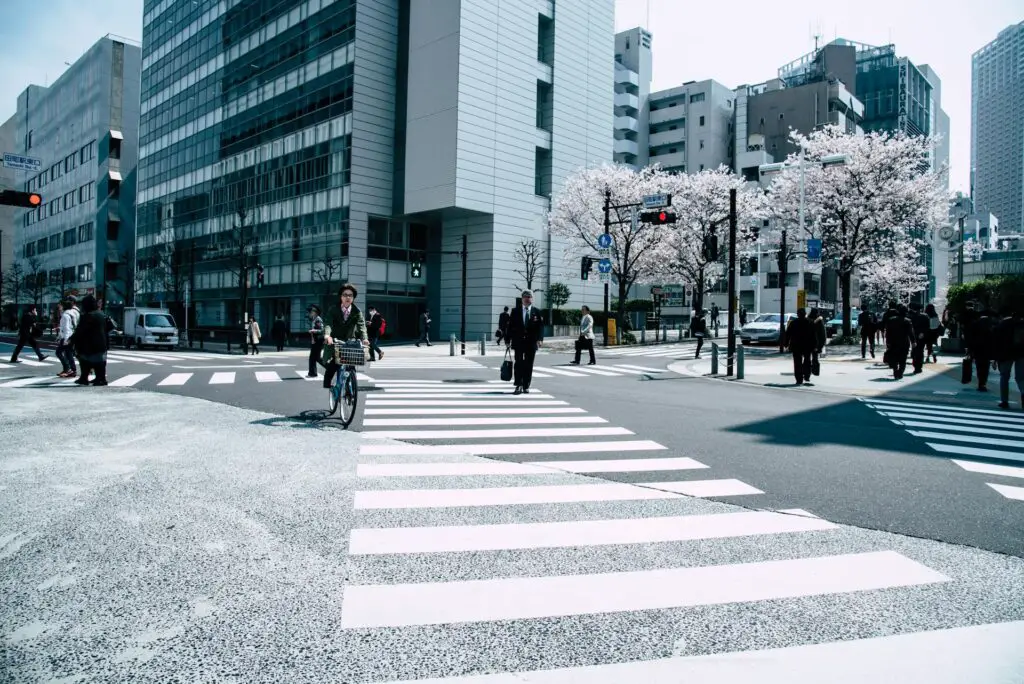Did you know that Japan boasts one of the most punctual railway systems in the world, with an average delay of just 18 seconds per train?
Whether you’re planning to explore the bustling streets of Tokyo or the serene temples of Kyoto, navigating Japan’s comprehensive transportation network can be an adventure in itself.
From the iconic Shinkansen bullet trains to the intricate subway systems, each mode of transport offers its unique charm and efficiency that will make your journey across this fascinating country a seamless and unforgettable experience.
Key Takeaways:
- The Shinkansen, or bullet trains, are a highlight of Japan’s transportation system, known for their punctuality, with an average delay of just 18 seconds. They connect major cities at high speeds, making long-distance travel within Japan both time-efficient and comfortable.
- Japan’s rail system is comprehensive, connecting not just the urban centers but also remote areas, thereby ensuring that travelers can reach nearly any destination in the country. Rail passes offer unlimited travel within specified regions, providing a cost-effective way to explore multiple cities and towns.
- Buses and subways fill in the gaps in Japan’s transportation network, providing essential connectivity in urban and rural areas not serviced by trains. These modes of transport are reliable, frequent, and integrated with the broader transport system for seamless travel experiences.
- Taxis in Japan are a convenient option for direct travel to specific locations, with most accepting modern payment methods such as credit cards and IC cards. Despite being more expensive than public transportation, taxis are comfortable, clean, and readily available, especially in urban areas.
- Japan supports cycling with well-developed infrastructure, including bicycle lanes and rental services, making it an eco-friendly and health-conscious way to see the country’s sights. Cycling offers a unique perspective of Japan’s cities and countryside, catering to those seeking a more personal and interactive travel experience.
- Air travel is efficient for covering large distances across Japan’s islands, with domestic flights offering quick connections. For a scenic route, ferries serve as a vital link to coastal cities and islands, providing unique travel experiences and access to Japan’s diverse landscapes and cultures.
Major Cities in Japan To Visit
1. Tokyo

Tokyo is Japan’s most famous city, with over 35 million people living in its 23 special wards. It’s known for having the world’s busiest pedestrian crossing, Shibuya Scramble Crossing, and Shinjuku, which is the busiest train station globally.
Tokyo is also famous for its modern culture – the otaku scene in Akihabara, filled with gaming and anime shops, and its trendy fashion districts like Harajuku and Shibuya.

But traditional culture is still alive here, too. You can find old shrines and temples, especially in the historic Asakusa area. Tokyo also hosts big festivals all year round and has the world’s largest sumo stadium – Ryogoku Kokugikan.
2. Yokohama

Yokohama sits south of Tokyo along Tokyo Bay’s coast. It was Japan’s first port to open to foreign trade in 1859, shaping its character with international influences. Chinese settlers formed the city’s famous Chinatown in the 1800s.
As the second-largest city in Kanagawa Prefecture, Yokohama offers a mix of attractions. You can enjoy harbor views from waterbuses or a Ferris wheel ride. There are amazing museums to explore:
1. Cupnoodles Museum Yokohama: Explore the creative and interactive exhibits that celebrate the history and creative process behind the invention of instant noodles by Momofuku Ando.
2. Yokohama Museum of Art: Showcases a diverse collection of modern and contemporary art, including both Japanese and international works, with particular emphasis on post-19th century art.
3. Yokohama Port Museum: Dedicated to the history of Yokohama’s port, this museum offers an insightful look into how the port’s opening to foreign trade in the 19th century transformed Yokohama and Japan.
3. Nagoya

Nagoya is a bustling city known for its automotive and aviation manufacturing. It’s a hub for technology, especially robotics. You can explore its tech side at places like the Nagoya City Science Museum or the SCMaglev and Railway Park.
In recent years, Nagoya has become famous worldwide for hosting the World Cosplay Summit. Cosplayers from all over the globe come here to compete in the World Cosplay Championship and join Japan’s impressive cosplay parades.
4. Kyoto

Kyoto, Japan’s former capital for over 1,000 years, is a treasure trove of traditional Japanese culture. With around 2,000 temples and shrines, including iconic sites like the “Golden Pavilion” Kinkakuji and the serene zen rock garden of Ryoanji, Kyoto offers a glimpse into Japan’s rich heritage.
One of Kyoto’s most famous areas is Gion, known as the “geisha district.” While encounters with geiko (geisha) and maiko (apprentice geisha) are rare, wandering through Gion may offer a chance encounter with these elegant figures in their beautiful kimonos.

For art and history enthusiasts, the Kyoto National Museum is a must-visit, showcasing over 230 designated National Treasures and Important Cultural Properties, providing insight into Japan’s illustrious past.
5. Nara
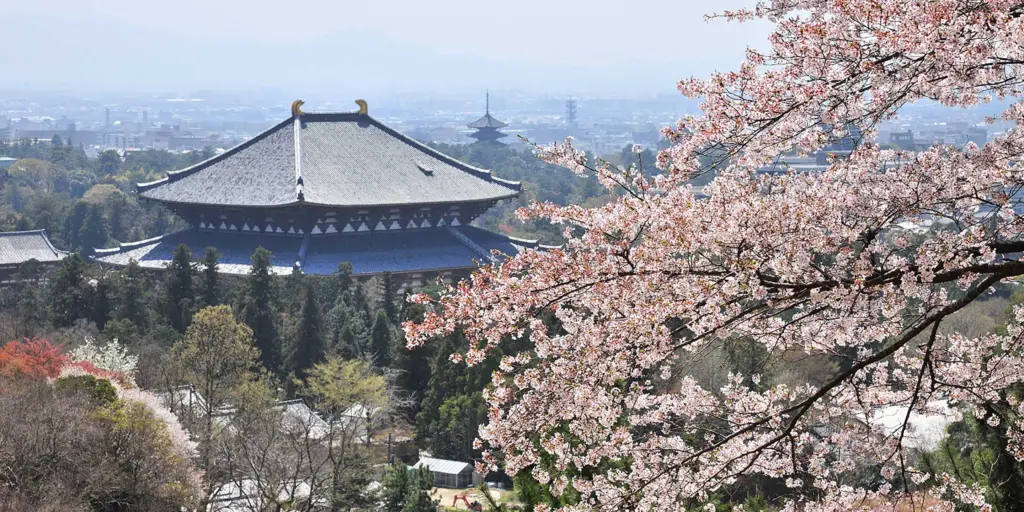
Nara, Japan’s ancient capital, is steeped in traditional culture and surrounded by natural beauty. Designated as a UNESCO World Heritage Site, the “Historic Monuments of Ancient Nara” comprise temples, ruins, along with the serene Kasugayama Primeval Forest.
But what truly sets Nara apart is its friendly population of wild deer that roam freely throughout the city. According to Shinto belief, these deer are considered sacred messengers of the gods.
Visitors flock to Nara Park to interact with these gentle creatures, who are known to bow politely in exchange for special “shika senbei” crackers. Additionally, Nara is home to Japan’s fastest mochi pounders at Nakatanidou, where visitors can witness this traditional craft in action.
6. Osaka

Osaka, the bustling heart of the Kansai region, is renowned for its vibrant character and rich culinary heritage. As one of Japan’s largest cities, Osaka’s distinct dialect and mouthwatering cuisine have captured the hearts of visitors nationwide.
This lively city offers entertainment for all ages, boasting attractions such as one of the world’s largest public aquariums and the renowned Universal Studios Japan. A trip to Osaka wouldn’t be complete without immersing oneself in the electric atmosphere of Dotonbori, where iconic neon signboards illuminate the streets lined with countless restaurants and amusement facilities.
Despite its modern allure, Osaka also preserves its cultural heritage with pride. Visitors can explore historic landmarks like Osaka Castle and Sumiyoshi Taisha Shrine or experience traditional Japanese art forms such as Bunraku puppet shows.
In Osaka, the blend of modernity and tradition creates an irresistible urban tapestry, inviting travelers to immerse themselves in its dynamic energy and cultural richness.
An Overview of the Efficient Transportation in Japan
If you plan to explore Japan efficiently, understanding the transportation system is essential. Japan offers a well-developed public transportation network consisting of buses, railways, the famous Shinkansen bullet trains, and taxis.
Public transportation in Japan is known for its punctuality and reliability. Buses are a convenient way to navigate within cities and reach destinations not easily accessible by train. The railway system is extensive, connecting even the most remote areas of the country. The Shinkansen, Japan’s high-speed bullet train, is a popular choice for long-distance travel, offering speed and comfort.
Taxis are readily available in urban areas and can be a convenient option for reaching specific locations quickly. While taxis can be more expensive compared to other modes of transportation, they provide a comfortable and door-to-door service.
Factors that Make Japan’s Public Transportation Outstanding
- Efficiency and Punctuality: Japan’s transportation system, particularly its trains, is renowned for its punctuality and efficiency. Trains in Japan often run with remarkable precision, adhering to tight schedules with minimal delays.
- High–Speed Rail Network: Japan boasts one of the most advanced high-speed rail networks globally, exemplified by the Shinkansen (bullet train). These trains operate at speeds of up to 320 km/h (200 mph) and connect major cities across the country swiftly and comfortably.
- Integrated Public Transportation: Japan’s public transportation system is highly integrated, offering seamless transfers between various modes of transport, including trains, subways, buses, and even ferries.
- Safety and Cleanliness: Japan’s transportation infrastructure is known for its exceptional safety standards and cleanliness. Stations, trains, buses, and other modes of transport are meticulously maintained, and safety protocols are strictly enforced, contributing to a comfortable and secure travel experience for passengers.
- Cultural Considerations: Quiet cars on trains, designated seating areas for elderly and disabled passengers, and orderly queuing systems are just a few examples of how Japanese transportation accommodates cultural norms and expectations.
Rail Transportation
Japan’s extensive rail network includes the famous (Bullet Train) and a web of efficient local trains and commuter lines.
It is known for its punctuality, speed, and widespread coverage, making it a popular choice for both locals and tourists.
Introduction to Japan’s Rail Network
Japan’s rail network offers an efficient and extensive transportation system that’s renowned for its punctuality and convenience. When traveling in Japan, consider purchasing a rail pass for unlimited travel within a certain region, such as the Kansai area, which includes popular destinations like Osaka, Kyoto, and Nagoya.
The rail pass allows for flexibility and cost savings, making it an excellent choice for visitors exploring multiple cities. In Kansai, you can seamlessly hop on and off trains to visit historical temples in Kyoto, experience the vibrant urban life of Osaka, or explore the cultural offerings in Nagoya.
With frequent departures and well-connected routes, Japan’s rail network ensures a smooth and enjoyable travel experience throughout your journey.
Shinkansen (Bullet Train)

One standout feature of Japan’s rail network that you must experience is the Shinkansen, also known as the Bullet Train. The Shinkansen is a high-speed train that offers unparalleled efficiency and comfort for travelers.
With the convenience of the Japan Rail Pass, you can easily hop on the Shinkansen and zip from Tokyo to Kyoto in just a few hours. The Shinkansen’s punctuality and speed make it a popular choice for both locals and tourists looking to travel between major cities quickly and comfortably.
Local Trains and Commuter Lines
Efficiently connecting various neighborhoods and suburbs, local trains and commuter lines in Japan form a crucial part of the country’s extensive rail network. When using these railway services, keep in mind the following:
- Convenience: Local trains and commuter lines offer frequent services, making it easy to navigate through different areas.
- Access to Train Stations: Train stations are strategically located, providing easy access to popular destinations and key areas.
- Integration with Transportation Network: These services are integrated with other modes of transportation, allowing for smooth transfers and efficient travel.
Bus Transportation
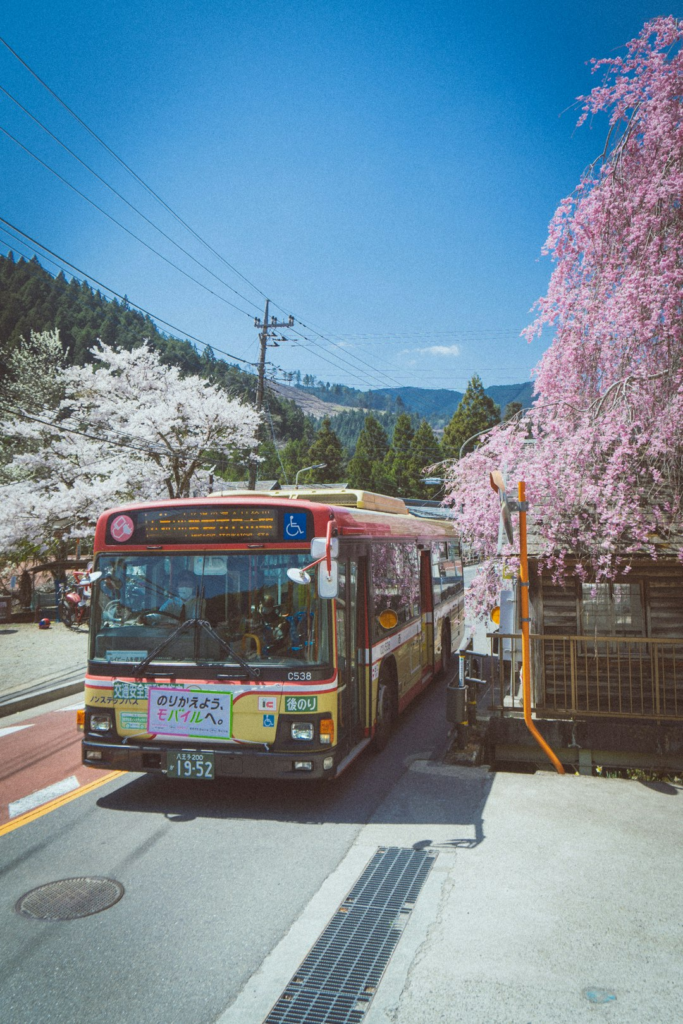
The bus system offers you a convenient and cost-effective way to travel around various cities and regions. Japan’s public transportation system includes extensive bus routes that cover both urban and rural areas, making reaching your desired destinations easy. Local buses are a common sight and provide a reliable means of getting around.
Purchasing a bus pass can be a smart choice if you plan to use buses frequently during your stay. These passes often offer unlimited rides within a specified period, saving you money compared to purchasing individual tickets for each journey. Additionally, bus passes can provide added convenience as they eliminate the need to carry exact change for fares.
Subway and Metro Systems
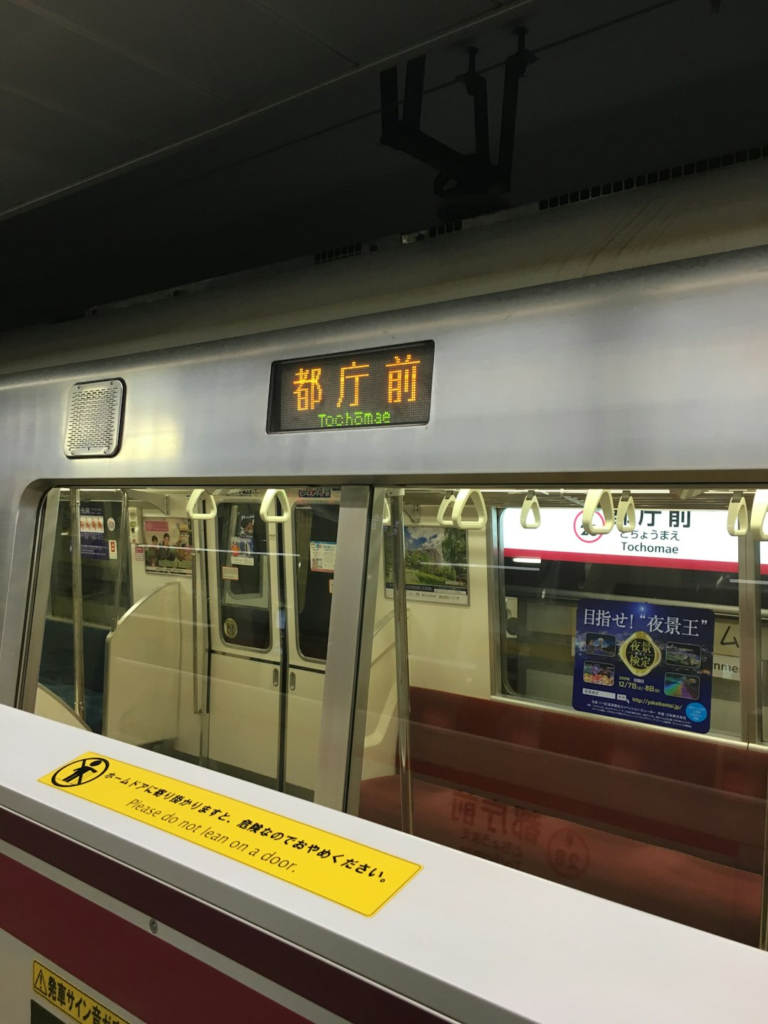
In a moment, you’ll learn about the Subway and Metro Services available in regional cities, as well as the different fare systems and ticketing options.
Understanding these key points will help you make the most of your travels around the country.
Subway and Metro Services in Regional Cities
Navigating regional cities in Japan becomes a breeze with their extensive and efficient subway and metro systems. These services are designed to make your travel experience seamless and convenient.
Here’s what you can expect:
- Coverage: The subway and metro systems in regional cities provide extensive coverage, connecting key areas and attractions within the city.
- Frequency: Trains run frequently, ensuring minimal wait times and allowing you to reach your destination promptly.
- Accessibility: Stations are equipped with amenities like elevators and ramps, making them accessible to all passengers, including those with mobility challenges.
Fare Systems and Ticketing
Japan’s transportation system is efficient, but navigating the fare systems can be confusing for visitors. To make your journey easier, familiarize yourself with the ticketing process.
When entering the subway or metro station, look for ticket machines or fare gates. Purchase a ticket based on your destination; fares are calculated by distance. Make sure to keep your ticket until you reach your final stop, as you’ll need it to exit the station.
If you’re unsure about which ticket to buy, don’t hesitate to ask the station staff for assistance.
Taxi Services
Understanding the types of taxis available, the various fare structures, and how to pay for your ride is crucial for a smooth travel experience in Japan.
Knowing the tips and etiquette associated with hiring a taxi in Japan can also help you navigate the taxi system effectively.
Types of Taxis
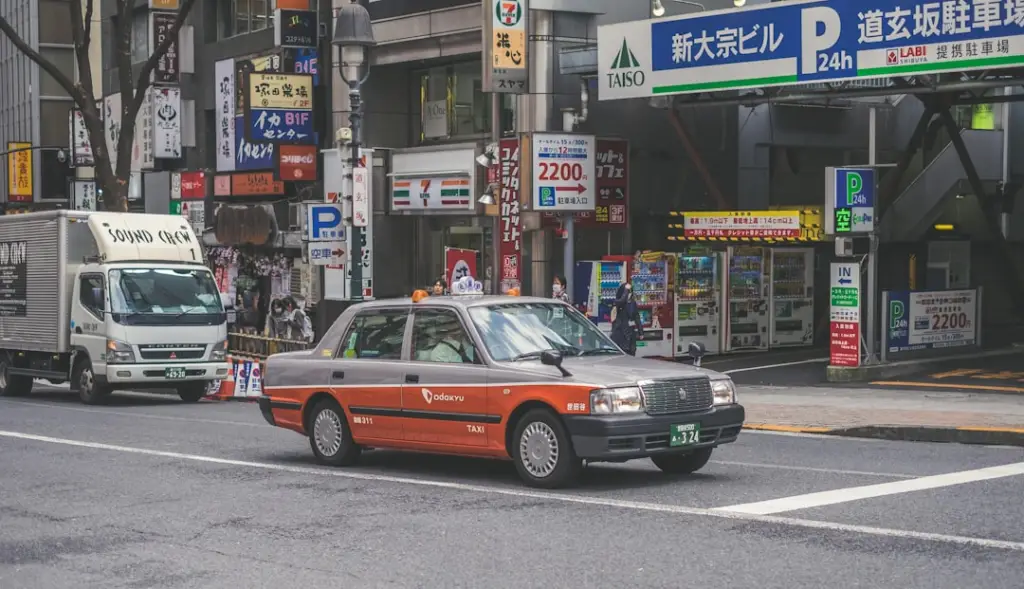
Travelers can easily hail a cab from various companies in major cities. When looking for a taxi in Japan, keep in mind the following types you might encounter:
- Standard Taxis: These are the most common type of taxis in Japan, easily recognizable by their sleek design and impeccable service.
- Luxury Taxis: For a more upscale experience, opt for luxury taxis that offer extra comfort and amenities for a higher fare.
- Van Taxis: Ideal for larger groups or travelers with more luggage, van taxis provide ample space and are readily available at major transportation hubs.
Taxi Fares and Payment Methods
Taxi fares in Japan are typically calculated based on distance traveled and time spent in the taxi.
Payment methods vary, but most taxis accept cash, credit cards, and IC cards for your convenience. It’s advisable to carry some cash when taking a taxi, as not all taxis may accept cards. Credit card payments are becoming more common, especially in urban areas.
Additionally, IC cards like Suica or Pasmo can be used for payment in some taxis, offering a quick and hassle-free way to pay for your ride.
Hiring a Taxi: Tips and Etiquette
For a smooth and courteous taxi experience in Japan, understanding the tips and etiquette for hiring a taxi is crucial. When hiring a taxi in Japan, remember these key tips and etiquette guidelines:
- Hand Gestures: Extend your arm outward, palm facing down, to hail a taxi. Avoid whistling or calling out to them.
- Seating: In Japan, it’s customary for passengers to sit in the back seat. The front seat is usually reserved for chauffeur-driven cars or when traveling with a large group.
- Payment: Always pay the fare displayed on the meter. Tipping isn’t customary in Japan, and it may even be considered rude.
Bicycle and Pedestrian Infrastructure
The well-developed infrastructure designed to accommodate pedestrians and cyclists makes traveling around Japan’s cities on foot or by bike easier.
In Japan, you’ll find a network of bicycle lanes, walking paths, and pedestrian-friendly streets that make urban cycling and walking a pleasant experience. The cities are thoughtfully planned with designated lanes for cyclists, separate from pedestrian walkways, ensuring safety and convenience for all travelers.
Pedestrian-friendly zones are common in Japan, with many areas closed off to vehicles, creating shared spaces where pedestrians and cyclists can move freely without worrying about traffic. These shared spaces are designed to promote a sense of community and encourage sustainable modes of transportation.
Air Travel
When flying within Japan, you’ll find a robust network of airports and airlines ready to serve you.
Here are some key points to consider for your air travel adventures:
- Airports: Japan boasts numerous airports, including major hubs like Narita International Airport in Tokyo and Kansai International Airport in Osaka, ensuring convenient access to various regions.
- Domestic Flights: Opting for domestic flights is a time-efficient way to explore the different prefectures and islands of Japan, with airlines offering frequent and punctual services.
- International Flights: If you plan to travel beyond Japan, major international airports like Haneda in Tokyo cater to a wide range of global destinations, connecting you seamlessly to other countries.
Remember these travel tips to avoid unpleasant issues arising:
- book your flights in advance to secure the best deals,
- arrive at the airport early to allow for smooth check-in procedures,
- familiarize yourself with your chosen airline’s baggage regulations.
Ferries and Water Transportation
Ferries provide a convenient and scenic way to travel, especially for island hopping adventures or reaching coastal cities that aren’t easily accessible by land.
In Japan, you can find a variety of ferry services operating in different regions, offering a unique perspective of the country’s stunning coastlines and landscapes.

One popular ferry destination is Tokyo Bay, where you can enjoy breathtaking views of the city skyline while cruising across the water. Tokyo Bay serves as a hub for water transportation, connecting various parts of the city and providing an alternative mode of travel for both locals and tourists.
Additionally, ferries are commonly used for island hopping excursions, allowing you to explore Japan’s diverse range of islands and experience the rich culture and natural beauty each island has to offer.
Car Rental and Driving
Consider renting a car to explore Japan’s diverse landscapes and charming countryside at your own pace. Driving in Japan can be a convenient way to access remote areas not easily reachable by public transportation.
Here are some tips to make your road trip experience enjoyable:
- Car Rental: Rental companies offer a wide range of vehicles, from compact cars to spacious vans, catering to your specific needs and budget.
- Driving: Remember to drive on the left side of the road in Japan. Roads are generally well-maintained, making it a pleasant driving experience.
- Traffic Laws and International Driver’s License: Familiarize yourself with Japanese traffic laws to ensure a safe journey. Additionally, it’s advisable to obtain an International Driver’s License before arriving in Japan to drive in the country legally.
A road trip in Japan allows you the flexibility to discover hidden gems off the beaten path. You can enjoy the scenic routes and immerse yourself in the beauty of Japan’s countryside while creating unforgettable memories.
Conclusion
Japan’s transportation system is highly efficient and comprehensive, making it straightforward for travelers to explore the country. The rail system, including the punctual Shinkansen bullet trains, covers major cities and towns, ensuring fast and reliable travel. Buses complement this network, reaching areas less accessible by train.
For urban travel, subways and metros provide a quick means to navigate major cities, while taxis offer convenient point-to-point service. For those looking to explore at their own pace, renting a bicycle or car can provide flexibility and access to off-the-beaten-path locations. Additionally, air travel connects Japan’s islands and remote regions efficiently, and ferries offer unique travel experiences along coastal areas.
Overall, the array of transportation options in Japan ensures visitors can easily find a mode that fits their preferences and travel plans, making their experience in exploring the country hassle-free and enjoyable.

